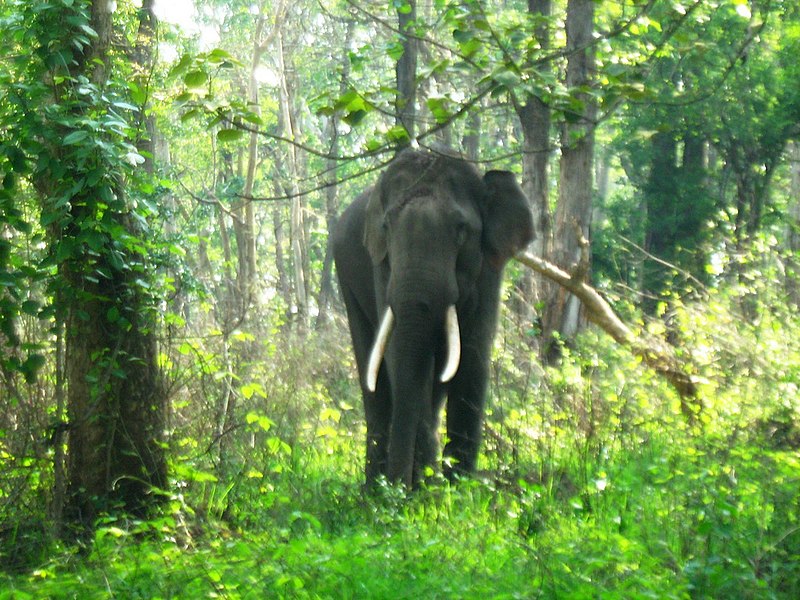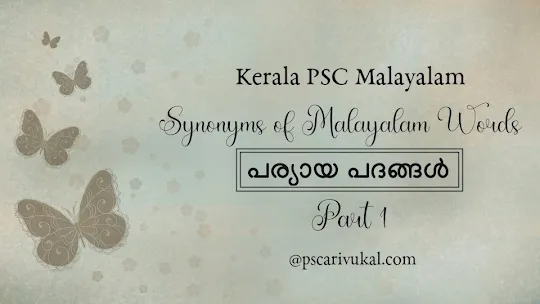India has 18 official national symbols, such as the national flag, an emblem, an anthem, and so on, which were adopted at various periods. These symbols serve as a medium of inspiring pride, hope, and aspirations in the mind of the people thereby invoking patriotism in them.
Let us look at the list of national symbols of India and its importance and history in short below for various competitive examinations including Kerala PSC, SSC, RRB, IBPS and other Govt. exams.
National Symbols of India
|
|
|
|
|
|
|
|
|
|
|
|
|
|
|
|
|
|
|
|
|
|
|
|
|
|
|
|
|
List of National Symbols of India: in depth
The section below delves into the National Identity Elements of India, which are useful in preparing for various competitive exams.
National Flag of India:
- Adopted on – 22nd July 1947.
- Adopted by – Constituent Assembly.
- Designer – Pingali Venkaiah.
- Length: Breadth – 3:2.
- First hosted by – Madam Bhikaji Cama (Struttgart (Germany), 1907).
- Only institution authorized to manufacture and supply the national flag of India – Karnataka Khadi Gramodyoga Samyuktha Sangha (Hubli, Karnataka).
- The tallest national flag in India is situated at – Attari-Wagah Border, Amritsar (418 ft, Punjab).
Flag Code of India
The flag code was modified on January 26, 2002, by integrating the existing provisions of the Emblems and Names (Prevention of Improper Use) Act, 1950, and the Prevention of Insults to National Honour Act, 1971.
National Emblem of India:
The National Emblem of India is an adaptation of the Buddhist Lion Capital of Asoka at Sarnath (representing motto "Satyameva Jayate: Truth Alone Triumphs"), near Varanasi in Uttar Pradesh.
The Emblem has four Asiatic lions (symbolising courage, confidence, and strength) mounted with sculptures at the top, and an elephant, a galloping horse, a bull, and a lion divided by intervening Dharma Chakra wheels above a bell-shaped lotus at the bottom.
- Adopted on – 26th January 1950.
- Designer – Dinanath Bhargava.
- 'Satyameva Jayate' is taken from – Mundaka Upanishad of Atharva Veda.
- written at the bottom of the national symbol in Devanagari script.
- Total no. of animals Found on the Emblem – 8.
- Animals Found on the Emblem – Lion, Elephant, Horse, Bull.
- Total no. of Lions found on the national emblem – 5 (4 on the top and 1 on the base).
All Indian currency is embedded with the national emblem and the words 'Satyameva Jayate' on one side.
National Anthem of India:
जनगणमन अधिनायक जय हे, भारतभाग्यविधाता।
पंजाब सिंध गुजरात मराठा, द्राविड़ उत्कल बंग।
विंध्य हिमाचल यमुना गंगा, उच्छल जलधि तरंग।
तव शुभ नामे जागे, तव शुभ आशिष मागे।
गाहे तव जयगाथा।
जनगणमंगलदायक जय हे, भारतभाग्यविधाता।
जय हे, जय हे, जय हे, जय जय जय जय हे॥
- Adopted on – 24th January 1950.
- Adopted by – Constituent Assembly.
- Language of Origin – Bengali (Sadhu bhasha).
- Written by – Rabindranath Tagore (1911).
- Composed by – Captain Ram Singh Thakur.
- Raga – Gaud Sarang (equivalent to carnatic raga Sankarabharanam).**
- Duration – 52 seconds (Short version – 20 seconds).
- First Recited on – Calcutta Session of the Indian National Congress (27 December 1911).
- INC President – Bishan Narayan Dhar.
- First Recited by – Rabindranath Tagore.
- First Published in – Tattwabodhini Patrika (1912).
- under the name 'Bharoto Bhagyo Bidhata.'
- Article related to the National Anthem – 51 A(a).
- Most repeated word in our national anthem – Jai Hai.
- No. of times the word Jai Hai repeats in our national anthem – 6 times.
- First state to be mentioned in our National Anthem – Punjab.
- The word 'Utkala' in our national anthem denotes – Odisha.
- The mountains and rivers mentioned in our National Anthem –
- Mountains – Vindhya & Himalaya.
- Rivers – Ganga & Yamuna.
National Song of India:
वन्दे मातरम्।
सुजलाम् सुफलाम्
मलयज शीतलाम्
सस्यश्यामलाम्
मातरम्।
वन्दे मातरम्।
शुभ्रज्योत्स्नाम्
पुलकितयामिनीम्
फुल्लकुसुमित
द्रुमदलशोभिनीम्
सुहासिनीम्
सुमधुर भाषिणीम्
सुखदाम् वरदाम्
मातरम्।।
वन्दे मातरम्।
- Adopted on – 24th January 1950 (by Dr. Rajendra Prasad).
- Language of Origin – Bengali.
- Written by – Bankim Chandra Chatterjee (Novel – ‘Anand Math’, 1882).
- Theme of Anandamath – Sanyasi / Fakir Rebellion.
- The poem is a homage to Goddess Durga, who represents India.
- Composed by – Jadunath Bhattacharya.
- Raga – Desh.
- Duration – 65 seconds.
- First Recited by – Rabindranath Tagore.
- First Recited on – 1896, 12th Annual Calcutta session of the Indian National Congress.
- INC President – Rahimtullah M. Sayani.
During the partition of Bengal in 1950, Lord Curzon banned the singing of this song and other similar slogan.
Nares Chandra Sen-Gupta was the first to translate Bankim Chandra Chattopadhyay's work Anandamath, which included the poem Vande Mataram, into English (The Abbey of Bliss, 1906).
The first two stanzas of the prose translated by Aurobindo Ghosh, which published in Karmayogin on November 20, 1909, were accepted by the Government of India's national portal.
Vande Mataram was then translated into a number of Indian languages.
It was translated into Tamil by Subramania Bharati and Arif Mohammad Khan, the current Governor of Kerala, was the man who translated Vande Mataram into Urdu.
Vande Mataram from the film 'Anand Math' ranked second in the 2002 international poll (from 7000 songs worldwide) conducted by BBC World Service to determine the top ten most renowned songs of all time.
National Pledge of India:
भारत मेरा देश है।
सब भारतवासी मेरे भाई-बहन हैं।
मैं अपने देश से प्रेम करता हैं।
इसकी समृद्ध एवं विविध संस्कृति पर मुझे गर्व है।
मैं सदा इसका सुयोग्य अधिकारी बनने का प्रयत्न करता रहूँगा।
मैं अपने माता-पिता, शिक्षको एवं गुरुजनो का सम्मान करूँगा और प्रत्येक के साथ विनीत रहूँगा।
मैं अपने देश और देशवाशियों के प्रति सत्यनिष्ठा की प्रतिज्ञा करता हूँ।
इनके कल्याण एवं समृद्धि में ही मेरा सुख निहित है।
- Written by – Pydimarri Venkata Subba Rao (1962).
- Language of Origin – Telugu.
- The chairman of the committee which decided to swear National pledge in schools – M. C. Chagla (1965).
In 1963, the national pledge was read out for the first time in a school in Visakhapatnam.
Since Republic Day, January 26, 1965, the National Pledge has been required to be said in schools every day, and it is additionally articulated amid school assemblies, on Independence Day, Republic Day, and at other customary or authorised celebrations.
National Currency of India:
- Issued & Controlled by – RBI.
- Subunit – Paisa.
- Symbol – ₹.
- Designed by – Udaya Kumar Dharmalingam (2010).
- Derived from – Devanagari consonant "र" (ra).
- The coins with the rupee symbol were issued from 2011.
National Language of India:
- Article 343 (1) – The article that declares Hindi as the official language of India.
- Adopted on – September 14, 1949.
- Hindi Diwas – September 14.
National Calendar of India:
- चैत्र
- वैशाख
- ज्येष्ठ(जेठ)
- आषाढ़
- श्रावण(सावन)
- भाद्रपद(भादों)
- अश्विन(क्वार)
- कार्तिक
- अग्रहायण(अगहन)
- पौष
- माघ
- फाल्गुन
About Saka Calendar:
- Founded by – King Shalivanhana of Shatavahana dynasty.
- Begins on – AD 78.
- First month of the Saka Samvat – Chaitra. begins on March 22 & if leap year begins on March 21.
- Last month of the Saka Samvat – Phalguna.
- Also known as Shalivahana Saka era or Mahasakkarat Era.
- Chairman of the Calendar Reform Committee which decided to adopt Saka Calendar – Meghnad Saha.
National River of India:
- Length – 2525 KM.
- Longest river in India.
- Home to endangered species, Ganges river dolphins.
National Animal of India:
- Tiger was declared as the national animal of India in 1972.
- Scientific name – Panthera tigris.
- Before the tiger, the lion was the national animal of India.
Keep Reading: The Tiger Reserves of India
National Aquatic Animal of India:
- Scientific Name – Platanista gangetica.
- Ganges River Dolphin was declared as the National Aquatic Animal in 2009, October.
National Heritage Animal of India:
- Scientific Name – Elephas Maximus indicus
- The elephant was declared as the National Heritage Animal in October 2010.
- It is declared as one of the endangered animals by IUCN
National Bird of India:
National Reptile of India:
National Flower of India:
National Fruit of India:
National Tree of India:
National Sport of India:
National Microbe of India:
National Fish of India:
- Study of Flags – Vexillology.
- Study of National Anthem – Anthematology (invented by David Kendall, Canada in 2003).
- Tattwabodhini Patrika was a journal of – Tattwabodhini Sabha.
- Tattwabodhini Patrika was established by – Debendranath Tagore (August 16, 1843).
- ഗ്രാമീണ കന്യക (കവിത) – കുറ്റിപ്പുറത്തു കേശവന്നായര്.
- Vikram Samvat – Official Calendar of Nepal.
- First woman who recited the National Anthem, 'Jana Gana Mana' – Sarala Devi Chowdhurani ( Tagore’s niece).
- Hockey –
- Total players in a Hockey team – 11.
- The total time duration of a Hockey game – 70 minutes.
- Hockey Wizard – Dhyanchand.
- Leader of Sanyasi / Fakir Rebellion of the 18th century – Pandit Bhabani Charan Pathak.
- The state aquatic animal of Uttar Pradesh – Gangetic Dolphin.














Post a Comment
Post a Comment